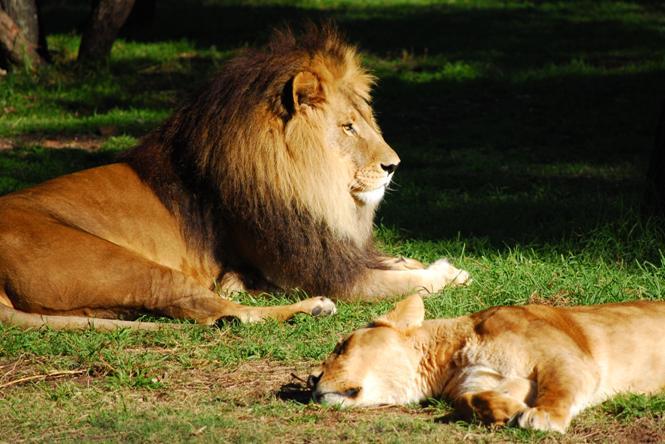
Structure of Revelation -- A Preview
Part 3 -- Interweaving of the Narrative, and more Parallels

Structure of Revelation -- A Preview
Part 3
By Graham Dull

Interweaving of the Narrative
It is necessary to note an important method by which John links the major sections of the narrative together. He links the sections by providing an 'interweaving of the narrative.'
This particular feature is so well recognized within Revelation that generally all commentators will refer to it. It is a feature which is impossible to miss.
John repeatedly uses this technique of interweaving throughout the book.
Here is an example.
The Epilogue is interwoven with the final 'Carried me away in the Spirit' Section.
John commences the Epilogue just a fraction before he completes the previous Section.
Here is the four-stage progression --
- The Second 'Carried me away in the Spirit' Section Rev 21:9-22:5 >>
- is interrupted by the beginning of the Epilogue at Rev 22:6, 7 >>
- then the 'Carried me away in the Spirit' Section continues again at Rev 22:8-11, and here concludes >>
- allowing the Epilogue to continue to the end of the book Rev 22:12-21.
See the following.
Interweaving of the final 'Carried me away in the Spirit' Section and the Epilogue
- 21:9-22:5 Fourth Prophetic Section -- Main
- 22:6, 7 Epilogue -- Beginning
- 22:8-11 Fourth Prophetic Section -- Ending
- 22:12-21 Epilogue -- Main
This shows how the sections alternate. Final Prophetic Section -- Epilogue -- Final Prophetic Section -- Epilogue.
Verses 6, 7 of Revelation 22 could easily be moved down 'so that they follow verse 11,' and this re-arrangement would unite all of the Final Prophetic Section, and likewise unite all of the Epilogue.
This re-arrangement would produce the following result.
The Final Prophetic Section would combine together (21:9-22:5) and (22:8-11) -- and this narrative would be followed by the Epilogue (22:6, 7) and (22:12-21)
Such an arrangement would sit comfortably. But John has chosen to 'interweave these passages together.'
Question
How can we clearly identify which verses belong to the Final Prophetic Section, and which belong to the Epilogue?
Parallels
The division between the two is recognized because of two sets of parallels.
The first parallel identifies the conclusion of both the First and Second 'Carried me away in the Spirit' Sections.
The second defines the 'beginning of the Epilogue' by means of the parallelism linking it to the Prologue.
We will examine these one at a time.

Prologue/Epilogue Parallel Set (1:1a/22:6; also 1:1b/22:16)

This set of parallels unites the Prologue with the Epilogue.
First Set 1:1a/22:6
The verse which commences the Prologue (1:1a) is parallel to the verse which commences the Epilogue (22:6). (This we have noted earlier.)
Rev 1:1a
"The revelation from Jesus Christ, which God gave him to show his servants what must soon take place."
Rev 22:6b
"The Lord, the God who inspires the prophets, sent his angel to show his servants the things that must soon take place."
Both verses state the same essential message that God sent his messenger to show his servants the things which must soon take place.
Clear parallels do link the introduction and the conclusion of the book. This is a structural principle of the Book of Revelation.
This principle identifies certain verses (22:6, 7) as indeed belonging to the Epilogue, as they tie the Epilogue and Prologue together by means of the parallel.
Thus the Prologue and Epilogue are easily recognised through Parallel 1:1a/22:6.
Second Set 1:1b/22:16
There is a second parallel united to the previous one. It is closely related in content. It is found in (1:1b) in the Prologue, and (22:16) in the Epilogue.
1:1b
He (God) made it known by sending his angel (his messenger = Jesus) to his servant John.
22:16
I, Jesus, have sent my angel (my messenger = John) to give you ('you' is plural -- 'you' refers to the seven churches) this testimony for the churches.
In the Prologue, it is stated that God sent his messenger to John. In the Epilogue, Jesus sends his messenger to the churches.
God sent his messenger (1:1b), Jesus sent his messenger (22:16).
Revelation begins with the statement that God sent his messenger, and ends with the statement that Jesus, in turn, sent his messenger.
The parallel helps to identify which passages actually belong to the Prologue and the Epilogue.
I have more to say regarding this 'parallel set' at a future date. It is enough for the moment to recognise that the parallel helps define the Sections in Revelation.
In the section immediately above, I have made statements which I have not supported with a reasoned argument -- statements which relate to the identity/identities of the angel/s in Rev 1:1 and 22:16. While I have made these comments, I do not address the topic of the angels' identities further in this article.
See box below on how to follow-up on this topic.
Here is a question for another day
Who is the Angel of Revelation 1:1? What is his name?
By pairing and comparing this set of parallels, we can discover the name of the angel who is the 'chief messenger' of Revelation.
First Parallel (1:1a/22:6b), Second (1:1a/1:1b), Third (1:1b/22:16a), Fourth (22:6b/22:16a)
These parallels plus the chiasm of Revelation 1:1, 2 enable us to identify the Angel.
UPDATE -- The article has now been written -- Select the link below to learn his identity.
.

'Carried me away in the Spirit' Parallel (19:9, 10 and 22:8-11)

This parallel unites the 'ending' of the First 'Carried me away in the Spirit' Section with the 'ending' of the Second.
There is a clear and unambiguous parallel between the words in 19:10 and 22:8, 9.
Revelation 19:10
"At this I fell at his feet to worship him. But he said to me, "Don't do that! I am a fellow servant with you and with your brothers and sisters who hold to the testimony of Jesus. Worship God!"
For the testimony of Jesus is the spirit of prophecy.
Revelation 22:8-11
"I, John, am the one who heard and saw these things. And when I had heard and seen them, I fell down to worship at the feet of the angel who had been showing them to me. But he said to me, "Don't do that! I am a fellow servant with you and with your fellow prophets and with all who keep the words of this scroll. Worship God!"
Then he told me, "Do not seal up the words of the prophecy of this scroll, because the time is near. Let the one who does wrong continue to do wrong; let the vile person continue to be vile; let the one who does right continue to do right; and let the holy person continue to be holy."
Four distinct points are made in this parallel.
- John fell down at the feet of the angel and attempted to worship him. (19:10) (22:8)
- The angel said, "Don't do that! I am a fellow servant with you..." (19:10) (22:9)
- The angel then said, "Worship God!" (19:10) (22:9)
- The angel makes a statement concerning the "prophecy" of the book. (19:10) (22:10,)
John is forbidden to worship the angel, he is admonished to worship God. With this identical experience, John closes the narratives of both Sections.
Here is a closer look at the parallels
19:10
I fell at his feet to worship him. But he said to me, "Don't do that!
22:8
I fell down to worship at the feet of the angel who had been showing them to me. But he said to me, "Don't do that!
The angel absolutely refused to receive worship from John.
19:10
I am a fellow servant with you and with your brothers and sisters
22:8
I am a fellow servant with you and with your fellow prophets
The angel identified himself as a fellow servant with John and his brothers and sisters/prophets.
19:10
who hold to the testimony of Jesus
22:8
with all who keep the words of this scroll
'Holding to the testimony of Jesus' is equivalent to 'keeping the words of this scroll' -- ie Revelation. 'The words of Revelation' and 'the testimony of Jesus' are one and the same.
This is true.
Revelation 1:1, 2 states that God gave the Revelation to Jesus Christ, who testified to it. It is indeed Jesus' testimony -- The Book of Revelation is the testimony of Jesus Christ.
Revelation 1:1,2
The revelation from Jesus Christ, (which God gave him)... (v2) (the word of God) and the testimony of Jesus Christ.
The revelation of Jesus Christ equals the testimony of Jesus Christ.
In the eyes of God Almighty, the Book of Revelation is a big deal -- we dare not treat it lightly.
19:10
Worship God!
22:8
Worship God!
The explicit command cannot be mistaken, John was told simply, "Worship God!"
19:10
For the testimony of Jesus is the spirit of prophecy
22:8
Do not seal up the words of the prophecy of this scroll
'The testimony of Jesus' is 'the spirit of prophecy' which is identified in the parallel as 'the words of the prophecy of this scroll.'
These three are identical --
- The testimony of Jesus
- The spirit of prophecy
- The words of the prophecy of this scroll
These equate to the Book of Revelation.
Interweaving of the final 'Carried me away in the Spirit' Section, and the Epilogue
This 19:9, 10/22:8-11 parallel clearly identifies the ending of the final 'Carried me away in the Spirit' Section, and it affirms that this Section and the Epilogue are indeed interwoven. (If necessary, refer again to the first section at the top of this page.)
More Examples showing Interweaving of the Narrative
Interweaving of the narrative is a technique which John frequently uses. It affects the structure of the narrative.
Here are two more examples.
I mention the examples only briefly -- I don't go into great detail here because interweaving of the narrative is such a well recognised feature of Revelation.
Interweaving is known by different terms including 'interlude.' I specifically avoid the use of the term 'interlude' because I feel it identifies one section of the narrative as the superior or the main narrative, while the interlude is a secondary narrative. I don't want to unwittingly and unintentionally put that interpretation upon the text.
Interweaving --
John presents six seals (6:1-17), he inserts a narrative (7:1-17), then after this break, he presents the seventh seal (8:1).
John presents six trumpets (8:2-9:21), he inserts a narrative (10:1-11:14), then after this break, he presents the seventh trumpet (11:15-19).
Section Summary
I would like further opportunity (at a future date) to share more regarding the interweaving of the narrative which John utilizes so frequently.
Sufficient at the moment is to acknowledge that such interweaving exists.

.


